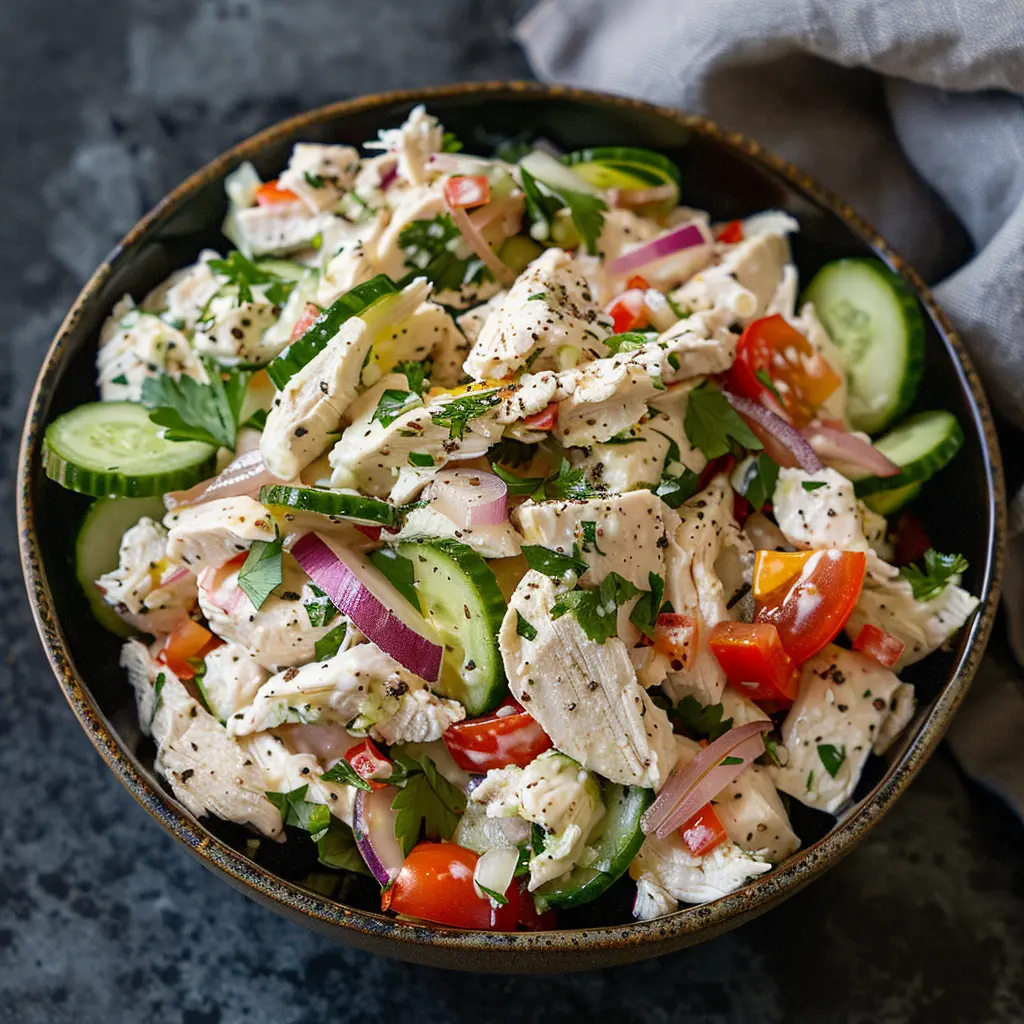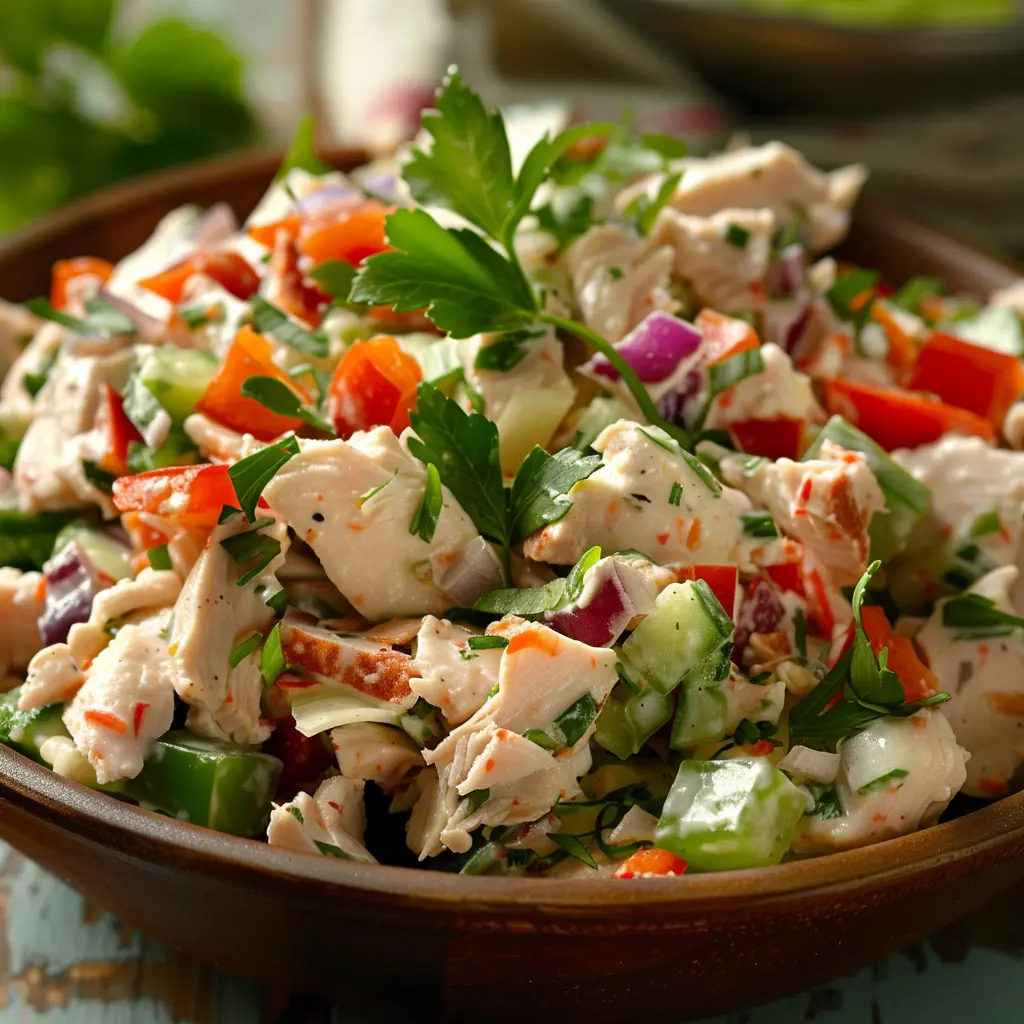Introduction to Freezing Chicken Salad
Chicken salad is a versatile and delicious dish, often made with a blend of chicken, vegetables, fruits, nuts, and a creamy dressing. Many people enjoy having it as a quick and convenient meal. What should you do if there are leftovers or if you want to prep ahead of time? Is it possible to freeze chicken salad without compromising its flavor and texture? This comprehensive guide will explore how to freeze different varieties of chicken salad effectively.
Overview of Chicken Salad Varieties

Chicken salad comes in many forms, ranging from the traditional to the more adventurous variations. Each type may require different considerations for freezing. Let’s explore some popular varieties.
Classic Chicken Salad
The classic chicken salad usually consists of shredded or cubed chicken, mayonnaise, celery, and seasonings. While freezing may slightly alter the texture of mayonnaise-based salads, careful preparation can minimize these changes.
Fruity Chicken Salad
This type of salad often includes a mix of fruits like grapes, apples, or pineapple, providing a sweet contrast to the savory chicken. The high water content of fruit can make freezing tricky, but it’s possible with proper storage and the right combination of ingredients.
Nutty Chicken Salad
Chicken salad with nuts (like almonds or pecans) adds a delightful crunch to the dish. When frozen, the nuts may lose some of their crispness, so adding them fresh after thawing is often a better approach.
Benefits of Freezing Chicken Salad
Freezing chicken salad can offer several benefits:
- Convenience: Preparing chicken salad in bulk and freezing allows you to have ready-to-eat meals whenever needed.
- Reduced Waste: Leftovers can be preserved instead of discarded.
- Meal Prepping: Pre-made portions save time for future meals, ideal for busy days or unexpected guests.
In summary, freezing chicken salad is feasible if you handle the ingredients properly. Aim to use minimal mayonnaise or dairy, add crunchy toppings after thawing, and consider freezing the components separately for optimal results.
Key Considerations Before Freezing Chicken Salad
Ingredients Analysis
Which Ingredients Freeze Well?
- Cooked Chicken: Cooked chicken retains its quality well in the freezer, making it a strong candidate for freezing.
- Dressing: Dressings like mayonnaise and yogurt-based ones can separate and change texture when frozen. Instead, opt for oil-based vinaigrettes, which hold up better in freezing temperatures.
- Vegetables: Hardy vegetables like carrots and celery can retain some of their crunch after thawing. If finely chopped, they are less likely to become mushy.
Ingredients to Avoid Freezing
- Leafy Greens: Ingredients like lettuce or spinach wilt quickly upon thawing, making them unsuitable for freezing.
- Soft Vegetables: Cucumbers, tomatoes, and other water-rich vegetables can become mushy and lose flavor.
- Eggs: Hard-boiled eggs become rubbery after freezing.
Impact on Texture and Taste
Freezing chicken salad will generally affect its texture. Ingredients with high water content will become softer and may release excess moisture. Dressings, particularly dairy-based ones, may separate, causing the salad to become runny. Adding fresh ingredients after thawing can help restore texture.
Health and Safety Tips for Freezing Chicken Salad
- Preparation: Make sure the salad is prepared with fresh ingredients and properly cooked chicken to minimize the risk of bacterial contamination.
- Portion Control: Freeze the chicken salad in individual servings to avoid multiple thawing and refreezing cycles.
- Sealing: Store in airtight, freezer-safe containers or bags to prevent freezer burn and contamination.
- Labeling: Clearly label with the date so you can consume within the recommended time frame (2-3 months).
- Thawing: Thaw in the refrigerator overnight rather than on the counter to minimize bacterial growth.
- Consumption: Discard the salad if it shows any signs of spoilage, such as a sour smell or unusual texture.
Step-by-Step Guide to Freezing Chicken Salad

Preparing Chicken Salad for Freezing
- Use Fresh Ingredients: Ensure that all components, especially the chicken, are fresh and thoroughly cooked to minimize spoilage risks.
- Exclude Delicate Items: Avoid adding leafy greens, tomatoes, or other delicate vegetables to the salad before freezing. Instead, add these fresh after thawing.
- Choose Appropriate Dressing: Prefer oil-based dressings over mayonnaise or yogurt-based dressings to reduce separation issues during freezing.
Best Practices for Packaging
- Portion Control: Divide the salad into individual servings. This way, you can thaw only what you need, reducing waste and maintaining quality.
- Airtight Containers: Use airtight, freezer-safe containers or heavy-duty zip-lock bags to minimize freezer burn and contamination.
- Labeling: Clearly label each package with the contents and freezing date for easy identification.
Freezing Techniques
Flash Freezing
- Spread Out: If the salad contains chunkier ingredients like diced chicken, place them evenly on a baking sheet to freeze first.
- Pre-Freeze: Flash freeze the baking sheet for 1-2 hours.
- Final Packaging: Transfer the frozen items into their final airtight containers for longer storage.
Portion Freezing
- Divide: Scoop the salad into individual portions using a spoon or ice cream scoop.
- Wrap or Bag: Wrap each portion in plastic wrap or place it in a small zip-lock bag.
- Storage Container: Store the individual portions in a larger airtight container or bag for additional protection.
Thawing and Reusing Frozen Chicken Salad
Thawing Methods
- Refrigerator Thawing: Transfer frozen containers or bags to the refrigerator and let them thaw overnight to maintain food safety.
- Cold Water Thawing: Submerge the airtight container or bag in cold water for a few hours, replacing the water as needed.
How to Refresh the Flavors Post-Thaw
- Add Fresh Ingredients: Mix in freshly chopped herbs, crunchy vegetables, or greens to brighten up the salad.
- Adjust Dressing: If the dressing appears separated or watery, add a small amount of fresh dressing to improve the flavor and texture.
- Seasoning: Taste and adjust the seasoning, adding salt, pepper, or lemon juice as needed.
Safety Checks Before Consumption
- Smell Test: Discard the salad if it has a sour or off smell.
- Visual Check: Look for signs of spoilage, like unusual textures or mold.
- Taste Test: If the salad tastes unusual or sour, it’s best not to consume it.
Do’s and Don’ts When Freezing Chicken Salad
The Do’s When Freezing Chicken Salad
- Use Fresh Ingredients: Ensure all salad components are fresh, especially the chicken, which should be fully cooked and cooled before freezing.
- Opt for Oil-Based Dressing: Use an oil-based dressing to reduce separation issues that can occur with mayonnaise or yogurt.
- Pre-Portion: Divide the salad into individual servings before freezing to make thawing and serving easier.
- Use Airtight Containers: Store the salad in airtight, freezer-safe containers or bags to prevent freezer burn.
- Label Clearly: Mark each container with the contents and freezing date to help manage inventory.
- Add Fresh Ingredients After Thawing: Refresh the salad with crisp vegetables and herbs after thawing to enhance flavor.
The Don’ts When Freezing Chicken Salad
- Don’t Freeze Delicate Vegetables: Avoid freezing delicate items like lettuce or tomatoes, as they can become mushy when thawed.
- Don’t Thaw at Room Temperature: Thaw in the refrigerator or under cold water instead of on the counter to minimize the risk of bacterial growth.
- Don’t Refreeze: Once thawed, avoid refreezing the salad, as this can degrade its quality and safety.
- Don’t Ignore Signs of Spoilage: Discard the salad if it smells off or shows signs of mold or unusual texture changes.
- Don’t Overfill Containers: Leave a little room in the containers for the salad to expand during freezing, preventing leaks or container breakage.
Alternative Ways to Store Chicken Salad
Refrigeration vs. Freezing
When it comes to storing chicken salad, refrigeration and freezing are two primary options. Refrigeration is a simple and convenient method suitable for short-term storage. Store the salad in an airtight container and place it in the refrigerator, where it will keep well for up to 3-5 days. The cold environment slows bacterial growth, ensuring the salad stays safe to eat while maintaining its taste and texture. However, it’s essential to keep it away from strong-smelling foods to prevent flavor contamination and consume it within the recommended timeframe.
Freezing, on the other hand, is ideal for longer-term storage, allowing you to keep chicken salad for up to 2-3 months. However, freezing can change the texture of certain ingredients, particularly mayonnaise, yogurt, and some vegetables, causing them to become watery or mushy. To minimize these changes, consider using a dressing with less dairy content, or opt for oil-based or vinaigrette-style dressings that freeze better. Additionally, separate any high-water-content ingredients like cucumbers or grapes before freezing, as they tend to become soggy. Adding them fresh after thawing will help retain the salad’s desired consistency.
Vacuum Sealing for Extended Freshness
Vacuum sealing is a storage technique that can extend the freshness of chicken salad, whether refrigerated or frozen. This method involves removing air from a specially designed plastic bag or container and sealing it tightly, which significantly reduces oxidation and bacterial growth.
When using this technique for chicken salad, separate components that don’t freeze well, such as greens, before sealing. Place the main portion of the salad into a vacuum-sealable bag, ensuring you have enough space for sealing. Remove excess air with the vacuum sealer, and then store the sealed bag in the refrigerator or freezer. For ingredients prone to sogginess or loss of texture, add them only after thawing.
Vacuum sealing can help the salad last longer in the refrigerator, up to 7-9 days, by maintaining freshness and preventing spoilage. When frozen, this method helps preserve the flavor and texture better than traditional storage methods, offering a storage life of up to 3-4 months.
By carefully choosing the right storage method and handling ingredients thoughtfully, you can enjoy delicious, well-preserved chicken salad whenever you like.
Common Mistakes to Avoid

Overfilling Containers
One common mistake when storing chicken salad is overfilling containers. Cramming too much salad into a container prevents proper sealing and leaves less room for air circulation. This can result in uneven cooling or freezing, which leads to a shorter shelf life. Overfilling also increases the risk of leakage, which may lead to cross-contamination in your fridge or freezer. To avoid this, always leave a little headspace at the top of the container. If freezing, this extra room allows for expansion, helping maintain the salad’s texture and flavor while preventing spills.
Ignoring Expiration Dates
Another error many people make is ignoring expiration dates. This can include the expiration dates of the salad’s ingredients as well as the storage time itself. Using expired ingredients like mayonnaise, yogurt, or vegetables can lead to rapid spoilage and even foodborne illnesses. When making chicken salad, check all components for freshness, particularly when using leftover chicken or perishable items. Additionally, once you’ve prepared the salad, label the container with the preparation date. This allows you to monitor how long it’s been kept.
In general, refrigerated chicken salad should be consumed within 3-5 days, while frozen portions should be used within 2-3 months for optimal quality. Regularly monitoring these dates will help you prevent the accidental consumption of expired food. Also, be aware that while frozen chicken salad can stay safe longer, its quality may diminish over time.
By avoiding these common pitfalls, your chicken salad will stay fresh and delicious, reducing waste and ensuring food safety.
FAQs on Freezing Chicken Salad
Can you freeze chicken salad with mayonnaise in it?
- Freezing chicken salad with mayonnaise isn’t recommended because mayonnaise tends to separate and change texture during freezing and thawing, leading to a watery, unappetizing salad. An oil-based dressing fares better. If mayonnaise is essential, consider adding it fresh after thawing.
How long does chicken salad stay fresh in the refrigerator?
- Properly stored in an airtight container, chicken salad typically lasts 3-5 days in the refrigerator. Ensure it’s kept at or below 40°F (4°C) to maintain freshness.
Is it possible to freeze chicken salad that contains grapes?
- Freezing chicken salad with grapes is possible, but grapes tend to become mushy and watery after thawing due to their high water content. It is better to add grapes fresh to the salad after thawing.
Can you freeze tuna salad and chicken salad?
- Both tuna salad and chicken salad can be frozen, but similar guidelines apply regarding ingredients like mayonnaise and high-water vegetables. Using oil-based dressings and excluding delicate ingredients will yield better results. Consider adding fresh components after thawing to enhance flavor and texture.
